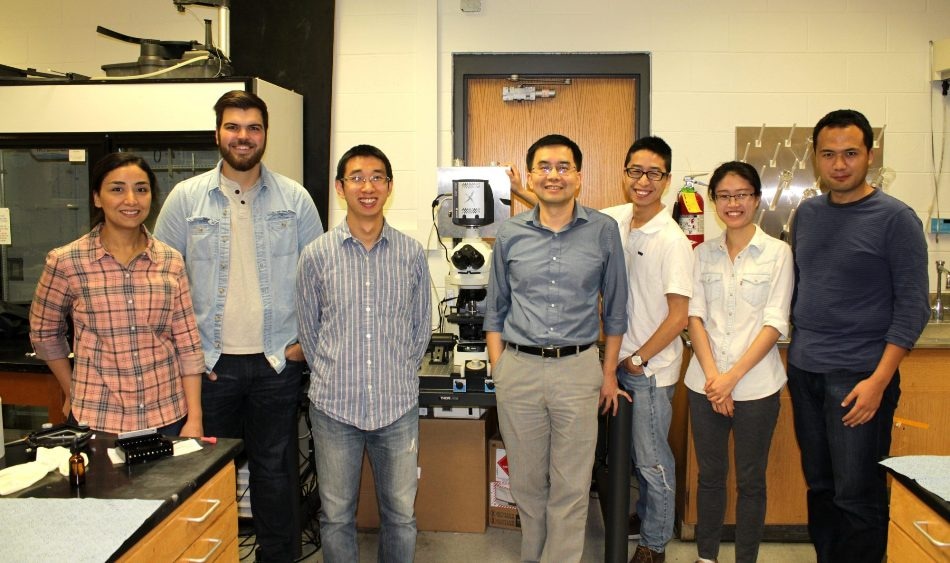Oct 17 2017
Dr. Ning Fang from Georgia State University’s Chemistry Department has developed a new optical imaging method, Single Particle Orientation and Rotational Tracking (SPORT), to view rotational motions in live cells and eventually target cancer cells.
 Credit: Georgia State University
Credit: Georgia State University
Fang’s discovery is a differential interference contrast (DIC) microscopy-based imaging tool that tracks different shapes and sizes of plasmonic nanoparticles. The SPORT is a modified saleable microscope with five-dimensional single-particle tracking capabilities.
DIC microscopy has long been used as a complementary technique to image cells because it provides better visualization of cellular features than other far-field optical microscopy techniques. The recent efforts made in my laboratory have transformed DIC microscopy into a primary research tool for tracking plasmonic nanoparticles in biological samples.
Dr. Ning Fang, Chemistry Department, Georgia State University
The SPORT allows Researchers to obtain basic knowledge about the detailed rotational dynamics of cellular processes, such as endocytosis, adhesion and transport of functionalized nanoparticles related to viral entry and drug delivery. Fang won the prestigious Innovation Award from the Federation of Analytical Chemistry and Spectroscopy Societies for this discovery.
Gold nanoparticles can stop cancer cell migration and prevent metastasis, which is a primary cause of cancer-related deaths. Fang stated that until now, very little has been understood with regard to why gold nanoparticles have this ability.
The SPORT helps in answering this question and provides insight into nanoparticle-protein and cell interactions particularly related to cell migration.
Our efforts contribute important fundamental knowledge to answer the most critical, yet still elusive question for the past two decades. What are the underlying mechanism of the profound effects of nanoparticles on cytotoxicity, human health and environments?
Dr. Ning Fang, Chemistry Department, Georgia State University
As a next step, Fang and his research team are planning to develop computer simulations in order to understand the effects of nanoparticle sizes, shapes and surface modifiers.
The National Science Foundation and the National Institutes of Health funded the research work.